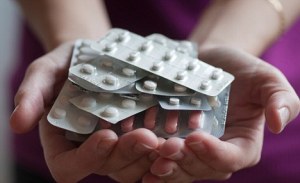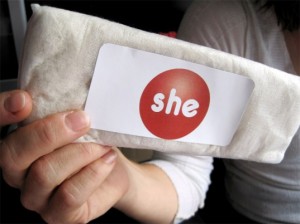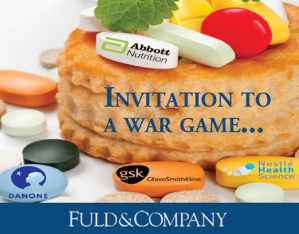Archive for the ‘consumer goods’ Tag

Just how many “me too” cholesterol-lowering agents do we really need? (Photo Courtesy: The Daily Mail)
The pharmaceutical industry’s fundamental business model has become increasingly less attractive in the last two decades, and a number of firms and industry experts have advocated large-scale change (e.g., E&Y’s Pharma 3.0 strategy, McKinsey’s pharma manufacturing revolution) in how pharmaceutical companies do business. In particular, GlaxoSmithKline (GSK) has staked much of its future success on pairing its longstanding strengths in traditional pharmaceutical product development with a top-down mandate to grow the size of its customer base in the 50 poorest countries in the world. Currently, these markets have less than 5% market penetration by Western pharmaceutical companies, and GSK views these underserved populations as missed opportunities for sales and revenue growth.
Last summer, three of us from Saïd Business School’s MBA Program, the London-based the International Centre for Social Franchising, and GSK collaborated to identify innovative, replicable models that would improve GSK’s ability to access and serve populations in developing countries. This work was based on an underlying assumption that a host of creative delivery models existed but were difficult to identify and evaluate. Once found and verified, GSK could partner and contribute as an investor, operational and technical expert, and multinational influencer as a means of scaling up and replicating these initiatives across multiple national markets.
The study team used a mixture of high-throughput quantitative methods and visit-based qualitative interviews. The former helped the team to screen a 1200-item aggregated universe of programs and identify common program type and geographic foci of innovation. The team then traveled to these geographic hotbeds, visiting over 50 delivery models and technical experts spread across Kenya and India. The major findings of this study included both overarching themes that were applicable to nearly every program visited (e.g., poorer customers are highly price-sensitive but will pay a premium if they value a product highly relative to other needs) as well as model-specific themes that relate to specific success factors for a given model type (e.g., social marketing programs usually required a local NGO partner with an established source of trust in the community). Some of the original assumptions of the study team were challenged by the findings. For example, the number of financially-sustainable, scalable projects that were worthy of multinational investment or partnership – and did not already have it – was exceedingly small.

Packaged food manufacturers have a longstanding history of rapidly altering prices, products, and brands to suit the needs of consumers best. What features of such everyday innovation would best suit the pharmaceutical industry? (Photo Courtesy: Paul Mullins)
Recommendations were developed with a variety of near-term actionable items (e.g., what to invest in, how to invest) for GSK as well long-term strategic considerations. The most universally relevant of these findings was a need in the pharmaceutical industry to rethink how it develops business strategies for these new, atypical markets. It could be argued the hunt-and-peck strategies that many pharmaceutical companies are using to experiment with new business models are inherently flawed. Instead, our team of MBAs recommended a variation on an approach popularized by many fast-moving consumer good firms (FMCGs; e.g., Procter&Gamble, Unilever). Although models vary, open innovation frameworks or innovation hubs typically create an internal business unit at large multinationals that standardizes how promising new business models are screened, evaluated, tested, and replicated. For example, many of the new products developed today at Procter & Gamble and Mars are rapidly rolled out in this way. These lean workgroups allow otherwise large, complex companies to nimbly experiment with an approach that accepts failure as learning activities and rapidly identifies promising goods or services for corporate scale. Pharmaceutical multinationals looking to expand in the developing world will need to build a similar series of internal systems and processes to remain competitive.
Contributions to the work described here were provided by Andy Thornton (Oxford MBA 2012), David Wong (Oxford MBA 2012), Jackie Horn (ICSF), and Dan Berelowitz (ICSF). Public findings from the completed study can be found here.
Disclosure: The work our team completed for GSK described above was a professional consulting project with financial remuneration conducted in collaboration between Saïd Business School, the ICSF, and GSK.
7 years ago, an enterprising Harvard student, Elizabeth Scharpf, began a project to produce sanitary napkins using local workers and local materials in sub-Saharan Africa. Although difficult to quantify, the amassed evidence has suggested that many women in developing countries– particularly school-age girls — are routinely sequestered and miss multiple days of school each month because of the lack of hygiene products to use during menstruation. This issue has been long ignored largely because of the associated stigma around a woman’s menstrual cycle in conservative societies and the lack of health officials familiar with women’s needs. Sustainable Health Enterprises (SHE), the company founded by Sharpf, was an attempt to a) address the needs of rural women through a locally available commercial product AND b) provide a self-sufficient business model to entrepreneurial women in these countries.
The basic model has been to first find local entrepreneurs interested in starting a local sanitary napkin production operation. The raw materials for these sanitary napkins are then sourced locally using banana tree fiber, a waste product of banana harvesting, as a substitute super-absorbent material. The cost savings on materials and production help reduce the cost per pad from US$0.11 to US$0.07.Local women are then trained to produce these with small table-top workshops that can be used in their private homes. These are then collected by the local entrepreneur and sold in markets or with door-to-door sales models.

First-generation SHE Pad. Not exactly what Rwanda’s women were looking for. (Courtesy Ecouterre)
SHE’s success to date has been mixed. Between 2009 and 2011, Scarpf used funding from Echoing Green and Harvard Business School to setup the first franchise model of banana fiber-based sanitary napkin production and distribution in Rwanda. However, using the available public information on SHE’s website and blog, the latest updates dated August 3, 2012 suggest that company is just now completing its supply chain and brand strategy. The largest hurdle seems to have been that the uniqe selling point SHE pads offer — their attractive lower price — are exactly why consumer demand from Rwandan women has not been strong. In a critical oversight, Rwandan women who cannot afford imported pads would rather use their existing coping mechanisms in a pad-less world than use SHE’s product. Although SHE is actively working through these issues and is currently completing a redesign, SHE has yet to prove its model for a new sanitary napkin for the low-income communities.
A particular concerning trend is that efforts to provide locally-produced sanitary napkins have been increasing even though the existing businesses have yet to identify a succcessful business model. At the the University of Oxford’s 2012 TATA Ideal Idol business plan competition in March, one of the finalist was BaNaPads, a similar sanitary napkin effort being attempted in Uganda. No evidence suggests that these me-too ventures are finding solutions to the problems that racked earlier efforts. Although there is a certain attraction to local production and women’s empowerment through independent income generation, the social entrepreneurship and global health communities should be self-critical to such unproven models.
While the work of the organizations above is commendable, none of these efforts have seem to realistically questioned if multinational corporations are already providing female hygiene products in the most financially sustainable way. Patricia O’Hayer, Unilever’s Vice-President for Communications and CSR, challenged the development community in a recent Oxford-based debate to avoid automatically assuming that there was something intrinsically better about local production versus global mass production when it came to making consumer healthcare products. Procter & Gamble and Unilever may be unapologetically “big business,” but their ability to reach economic scale and provide a safe, reliable product may be unmatched in this product category. Entrepreneurial efforts such as these must be compared to existing ways of doing business if they are meant to contribute to societal value creation.
Disclosure: In early 2012, I informally worked with a team from Procter & Gamble on shared interests to bring health-related retail products to rural communities in rural Kenya. There was no material remuneration from this engagement.
Last week, I had the opportunity to participate in a strategic war game. For those unfamiliar with the term, imagine a business strategy competition where four teams are posed with the same problem. The unique twist of a war game is that each team is assigned the identity of a real entity (e.g,. the management of a health insurance firm) and must justify all the decisions it makes by demonstrating consistency with the existing operations and culture of the real thing. While these can be organized as internal professional development opportunities, this particular war game — entitled “Designer Foods – who will win Big Pharma or consumer goods?” — was an Oxford-Cambridge face-off organized by Fuld & Company, a business intelligence firm.

Let the games begin
The basic premise upon which the four teams’ arguments turned was how scientifically-engineered super-foods would develop in the coming years. Specifically, would the expected explosion in health-oriented food products that enhanced wellness be led more by science-based pharmaceutical firms (e.g., GlaxoSmithKline [or GSK] and Abbott Nutrition) that lack brand recognition with consumers or traditional consumer goods firms (e.g., Nestle Health Science and Danone) who understood consumers but have struggled with regulatory concerns over their prior health claims? The intentional ambiguity of what qualified as a “designer food” and what potential scientific advances were on the horizon made the ensuing presentations and Q&A sessions highly unpredictable and insightful.
The consensus ultimately reached by participants and observers alike was that this gray area between food and medical product is developing unusually fast and not without controversy. Risks abound for a company to find itself either a) not being able to bring consumer-friendly markets to product quickly enough, or b) not being able to justify satisfactorily any health claims to government watchdogs.For example, both GSK and Abbott had substantial history in medical nutrition (e.g., infant formula, adult disease-specific supplements), but neither had successfully grown a brand in a consumer-oriented product segment. Conversely, Nestle was intimately aware of its consumer reputation as too much a “confectionary company,” and Danone was being dragged through courts on multiple continents for health claims it had later amended with its Activia line of digestive yogurt-based products.
The solution put forth by our team (and others) was that the firms gathered could best participate in this new market ecosystem by partnering with complementary firms. For example, we were assigned GSK and strongly advocated the firm formalize new product development with a consumer goods firm (e.g., Nestle, Danone, Unilever) to quickly move into the space. Our argument rested on GSK’s ability to provide “scientific credibility” to consumer goods firms’ health claims. However, not everyone agreed with this strategy. The Danone team returned in a later round to not only reject an offer to partner with a major pharmaceutical company but opted to leave the functional food market (and return to its traditional fresh-dairy products without health claims) after a game twist led to increased regulation of food products making health claims.
It will be interesting to see where the designer food market ultimately goes. One of most important findings I noted during my business research for the competition was the lack of credible products in the space. There are a number of medical food products that will soon hit the market (e.g., chewing gum to reduce blood phosphate levels in kidney failure patients); and there remain a number of essentially rebranded naturally healthy products like yogurt with active cultures. What I was unable to find were products intended for the mass market that made uniquely novel health claims. It is certainly possible that rather than a dominant player establish designer foods as a strategic growth market, the role of high-science, mass-market foods dwindles out for lack of promising development.
Disclosure: I received a share of the prize money awarded to the first place team by Fuld&Company the Oxford-Cambridge War Game simulation. As of June 2012, I am currently engaged with one of the firms above on a short-term consulting project unrelated to designer foods.



